#NatureZen: Find That Moth!
words and photos by Melissa McMasters
Happy National Moth Week, everyone! This week we celebrate the beauty and life cycle of an organism with more than 150,000 species worldwide. Because most moths are nocturnal, there are a vast number of species that we may encounter only rarely. But there are plenty of day-flying moths to discover, with a catch: both adult moths and their caterpillars are really good at camouflage!
Moths have evolved coloration and patterns that help them become invisible (or at least inconspicuous) to predators. Some studies even suggest that moths choose specific resting spots on trees and leaves to blend in maximally with their surroundings. These adaptations are necessary because moths have so many predators.
One of the most common ways moths camouflage themselves is by adopting the appearance of leaves. This white furcula moth caterpillar mimics the color of the leaves it feeds on. The red coloration and the long tail suggest a leaf that’s recently dropped off a tree–and that’s what I thought it was until something made me do a double-take. Practice your double-takes in the forest! Sometimes you’ll see something different than you’re expecting.
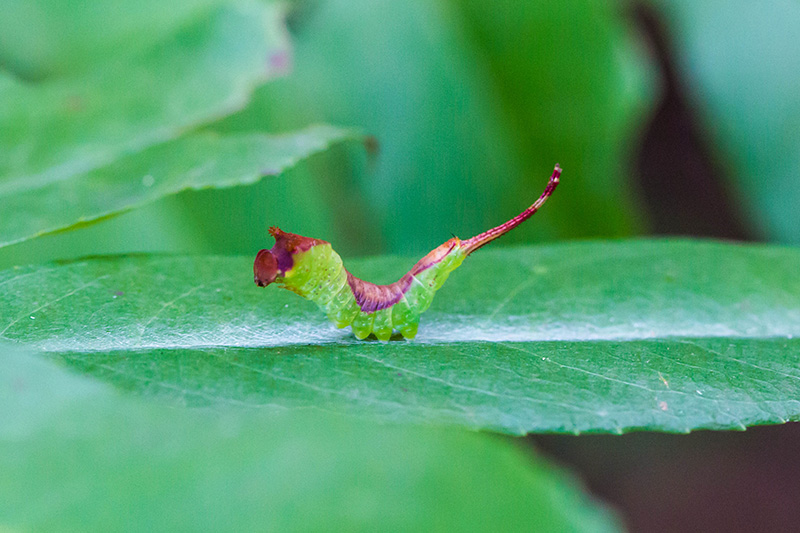
This yellow-necked caterpillar moth resembles a rolled-up dead leaf. Even the tiny spots on its wings give it that weathered texture.
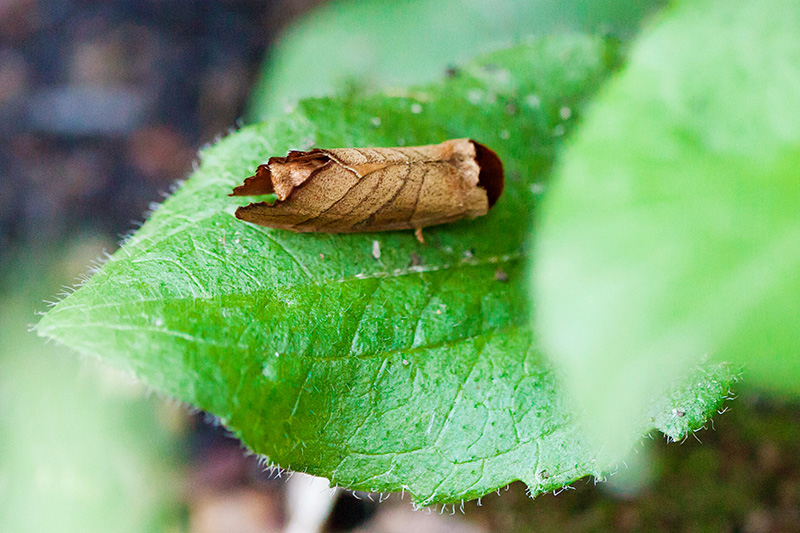
This grape leaffolder moth’s wings have small splotches that look similar to the decaying leaf edge that it’s perched on. Its wing color is also an exact match. It’s probably no accident that it chose this exact spot on the leaf to rest.
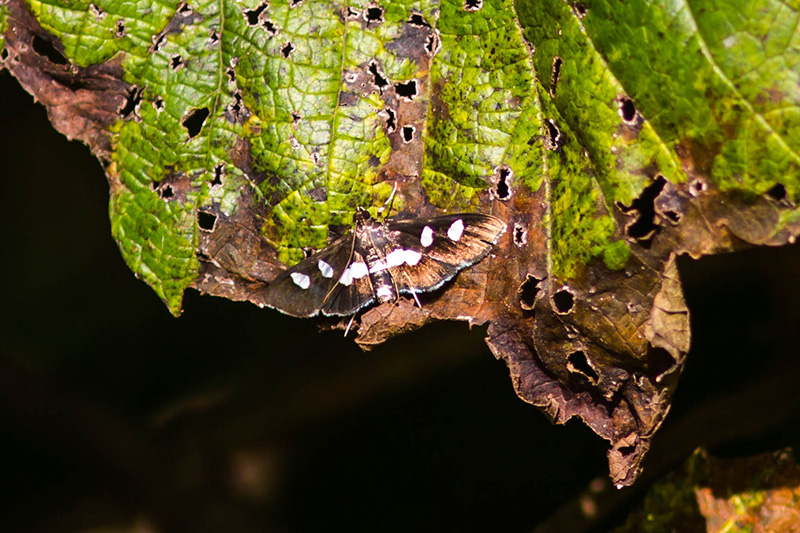
The toothed brown carpet moth is, as its name suggests, at home on the forest floor, where its colors blend in with the stems, leaves, and soil.
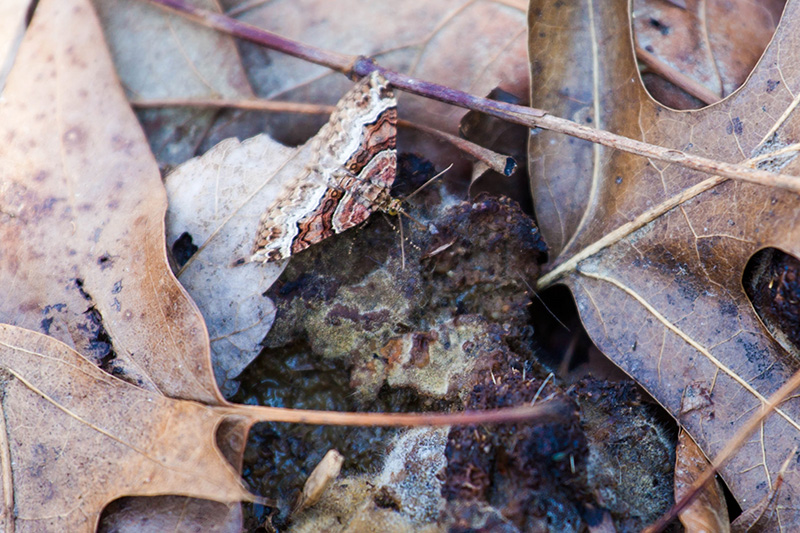
Lending further credence to the theory that moths choose their resting spots wisely, this decorated owlet is shaped exactly like the fallen leaf it’s resting against, right down to the fringing on the edges.
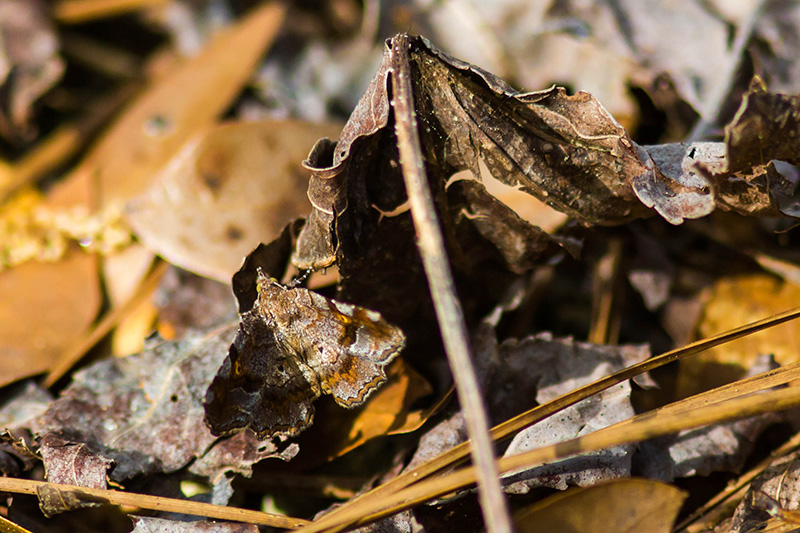
Some moths choose a different tactic for camouflaging themselves. Instead of blending in with their backgrounds, they evolve to resemble something no one wants to eat. And that’s why there’s an entire category of bird dropping moths! Here’s an olive-shaded bird dropping moth, which even has irregular wing markings to mimic the not-exactly-perfect texture of droppings. That’s right: I’m now telling you that you have to look twice at a pile of bird poop!
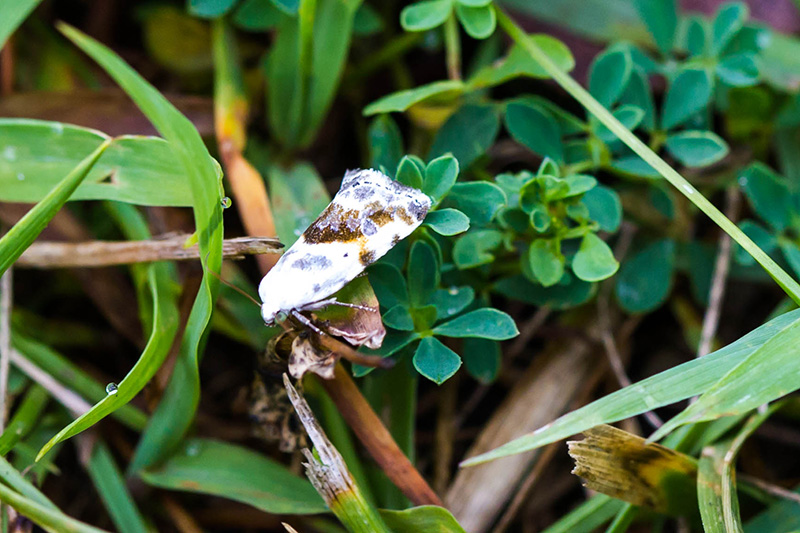
This small bird-dropping moth has some different shading, presumably because birds have different diets and produce different types of droppings!
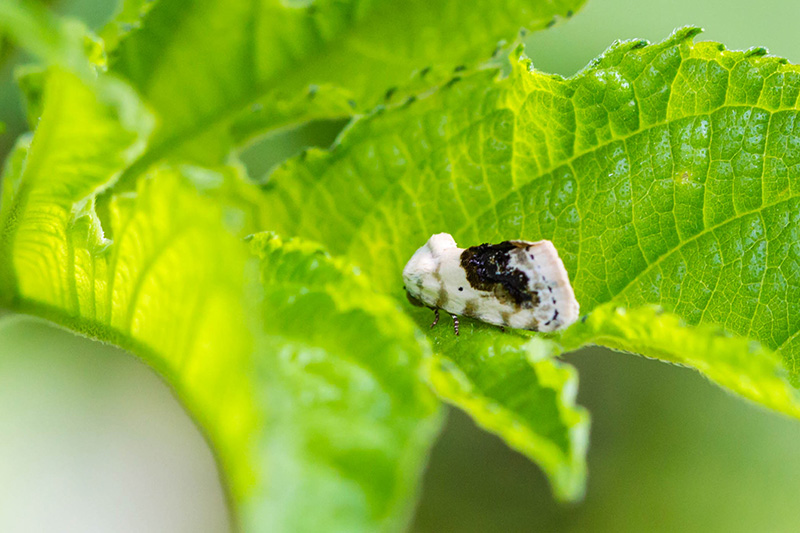
Some moths choose to cosplay as insects predators don’t want to mess with. This Texas wasp moth that I saw at the National Butterfly Center looks like something that would sting anyone that got in its way.
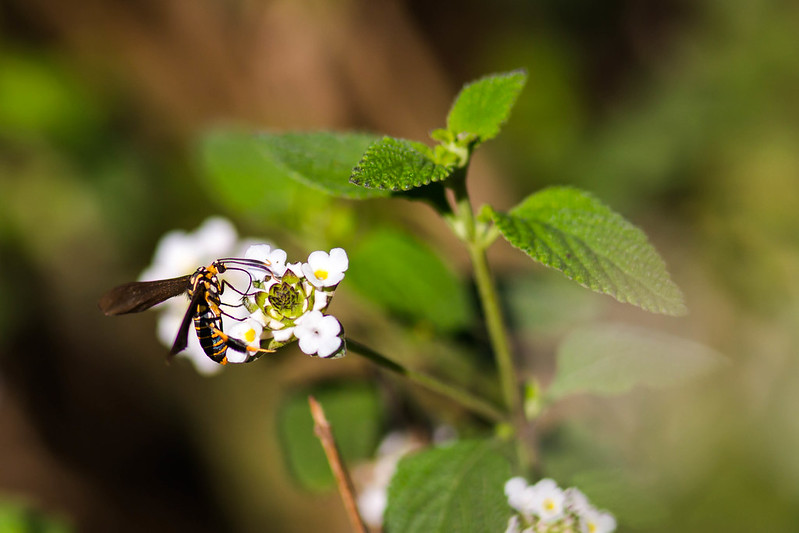
My favorite example of moth camouflage is a tulip tree beauty that I found in the Old Forest a few years ago. I feel about this one the way I feel about most barred owl spottings: I would never have noticed it had it not been flying. Try to pick the moth out against the bark.
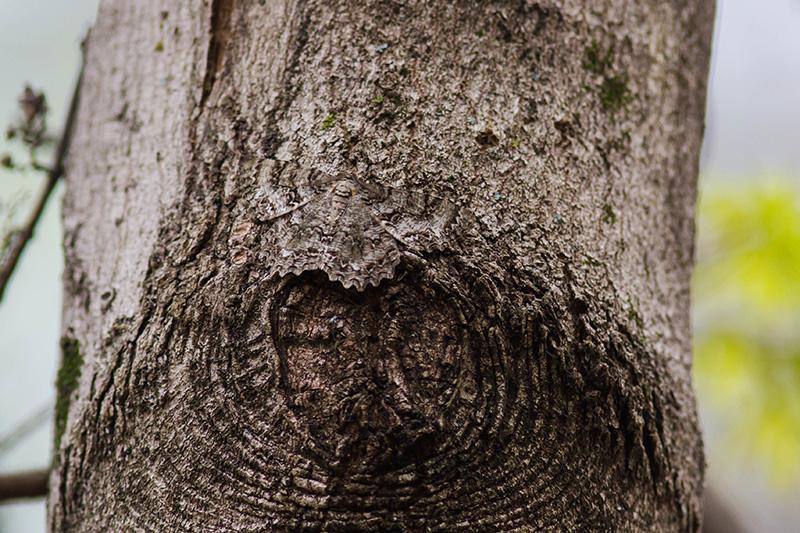
Need a little help? Here’s an outline! Notice how the darker patterns on its wings line up very closely with the darker parts of the tree bark. Almost like it knows what it’s doing…

We hope you’ve enjoyed this glimpse into some of nature’s great hiders. If you’re out this week (or if you’ve got a porch light), snap some photos of moths and submit them to the National Moth Week project on iNaturalist!



